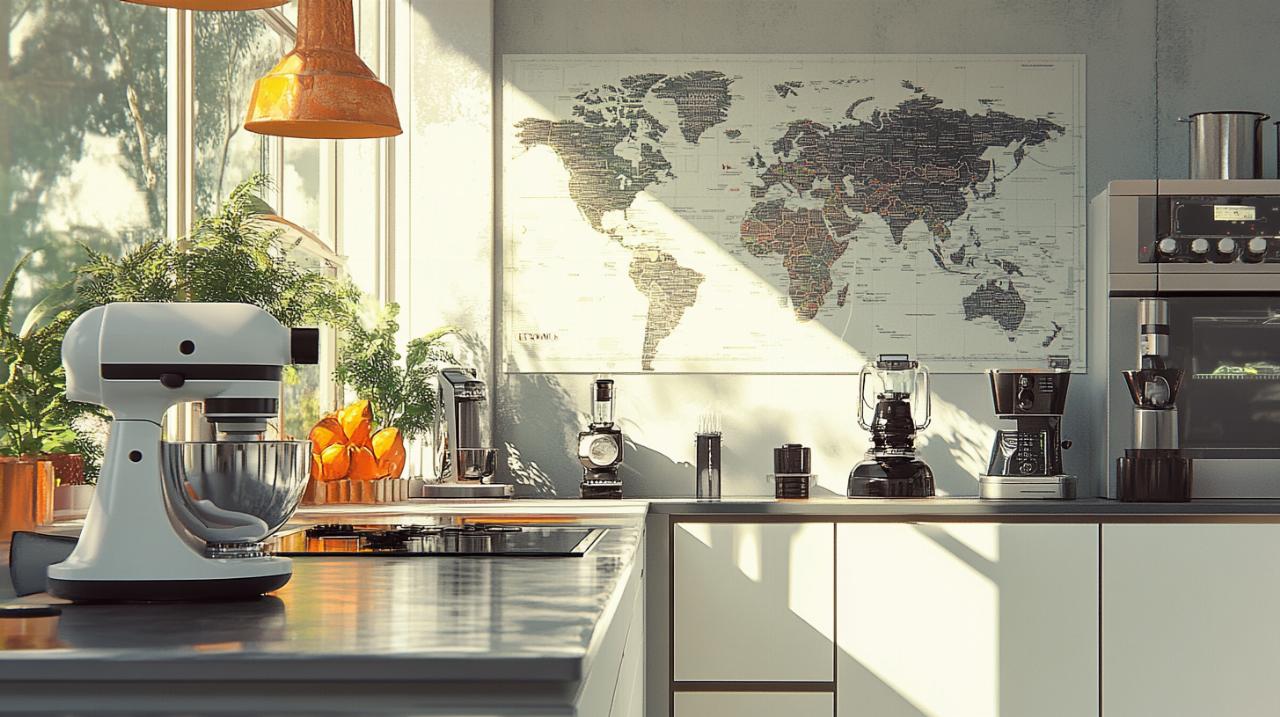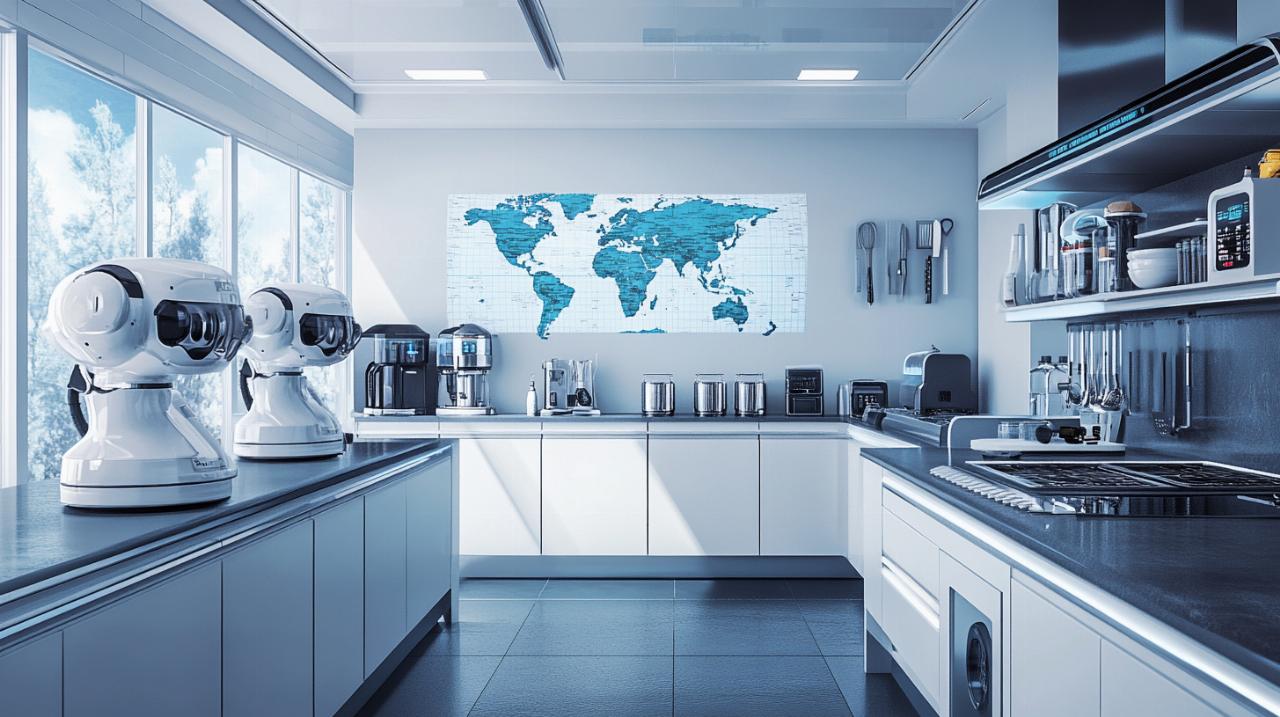Discover the Top Kitchen Robot Brands and Essential Buying Tips

Modern kitchens are witnessing a revolution with the arrival of smart cooking devices that promise to simplify meal preparation whilst unlocking new levels of culinary creativity. These sophisticated appliances combine multiple functions into a single unit, handling everything from chopping and mixing to steaming and braising with remarkable precision. As interest in these versatile machines continues to grow, understanding which brands deliver genuine value and what features truly matter becomes essential for anyone considering this investment in their kitchen.
Leading kitchen robot brands worth your investment
Premium Kitchen Robot Manufacturers in the UK Market
When exploring the landscape of the best kitchen robot brands and tips, certain names consistently rise to the top for their innovation and reliability. Thermomix stands out as a premium choice, with models commanding prices exceeding six hundred pounds. The TM6 variant has earned particular acclaim for its exceptional versatility, seamlessly managing tasks ranging from baking and steaming to blending and beyond. This German-engineered marvel represents the pinnacle of what these appliances can achieve, though its price point reflects that status. KitchenAid has built its reputation on durability and reliable performance, with stainless steel components that promise longevity in even the busiest households. The CookingPal Multo offers a compelling alternative with its precise temperature control, automated stirring capabilities, and integrated scale, all managed through a user-friendly touch screen interface that makes complex recipes surprisingly accessible.
For those seeking quality without quite reaching the premium tier, several manufacturers deliver impressive performance at more approachable price points. The ChefRobot Ultracook sits at approximately six hundred and forty-nine pounds, featuring a generous three-litre bowl and a seven-inch touch screen that provides clear guidance through steaming, blending, and baking functions. Kenwood’s KCook model presents a practical option with its two-litre capacity and ability to reach one hundred and eighty degrees Celsius, demonstrating that reliable heating performance need not require an enormous investment. Magimix, the esteemed French brand, has earned recognition for delivering high-quality food processors at competitive prices, whilst Bosch brings its engineering precision and reliability to budget-conscious households without compromising on user-friendly design.
Comparing performance and reliability across top brands
The cooking robot market continues its impressive expansion, with projections suggesting it will reach one hundred and forty-six point five three billion dollars by two thousand and thirty-one, driven by an annual growth rate exceeding eleven percent. This remarkable trajectory reflects the genuine value these devices bring to modern kitchens through time savings, versatility, and simplified meal preparation. When evaluating different brands, motor power emerges as a critical differentiator. Quality models suitable for everyday use should feature motors delivering at least five hundred watts, though many professional-grade alternatives offer between one thousand four hundred and two thousand two hundred watts for handling tougher ingredients and more demanding tasks. Similarly, heating capacity matters significantly for even cooking results, with the most effective models providing nine hundred to one thousand watts of heating power.
Beyond raw specifications, the practical differences between brands become apparent in their approach to user experience and longevity. High-end models frequently incorporate stainless steel construction that ensures durability whilst simplifying cleaning, and checking that accessories are BPA-free protects food safety. Bowl capacity represents another crucial consideration, particularly for larger households, with options ranging from two litres for couples up to four point five litres for families of four or more. A quality cooking robot typically delivers five to ten years of reliable service, making the initial investment considerably more palatable when viewed across its working life. These devices can improve food quality by following recipes with consistent precision whilst maintaining hygiene standards that reduce contamination risks. Moreover, they contribute to household savings by minimising food waste through accurate portioning and reducing labour costs associated with meal preparation.
Essential factors to consider when purchasing your kitchen robot

Key features and specifications you shouldn’t overlook
Selecting the right kitchen appliance becomes considerably easier when you understand which features genuinely enhance your cooking experience versus those that merely inflate the price. Automation capabilities vary significantly across models, with top-tier options handling multiple simultaneous tasks such as chopping ingredients whilst maintaining precise temperature control for sauces. Versatility stands as perhaps the most valuable attribute, allowing a single appliance to replace numerous single-purpose tools cluttering your countertops. Exploring all available functions, including steaming vegetables whilst preparing accompanying sauces, maximises time efficiency and justifies the investment. The integrated scales found on many models enable precise measurements that transform baking results, whilst adjustable speeds provide control over texture that proves invaluable for everything from smooth purees to chunky salsas.
Practical considerations often receive insufficient attention during the purchasing process, leading to disappointment after delivery. Adequate counter space represents a common oversight, as these substantial appliances require both operational room and convenient storage locations. Thinking carefully about your actual cooking needs prevents purchasing unnecessary capacity or features that remain unused. Cleaning and maintenance requirements deserve thorough investigation, as dishwasher-safe parts and easy disassembly dramatically reduce the ongoing effort required to keep your appliance hygienic. Consulting the user manual for maintenance schedules and recommended practices helps preserve performance across years of service. Safety features including automatic shut-off mechanisms and secure lid locks protect households, particularly those with curious children. Additional accessories such as multi-level steamers and ingredient dispensers extend functionality, enabling simultaneous preparation of complete meals rather than individual components.
Budget Considerations and Value for Money Assessment
The financial landscape for cooking robots spans an remarkably wide range, with entry-level models starting around three hundred pounds and premium alternatives exceeding three thousand pounds. This substantial variation reflects genuine differences in capabilities, construction quality, and longevity rather than mere brand positioning. Entry-level models priced between three hundred and five hundred pounds suit beginners exploring whether these appliances align with their cooking style, offering fundamental functions without overwhelming complexity or financial commitment. Mid-range options spanning five hundred to one thousand pounds introduce advanced features including enhanced temperature precision, larger capacities, and more sophisticated programming that appeals to confident home cooks ready to expand their repertoire.
High-end models commanding over one thousand pounds, potentially reaching three thousand pounds or beyond, deliver smart home integration and exceptional precision that professional or passionate amateur chefs genuinely appreciate. However, the optimal choice depends entirely on individual circumstances rather than assuming higher prices automatically deliver better value. Finding the right kitchen appliance proves tricky with prices ranging from one hundred to over one thousand five hundred pounds, making careful evaluation essential. A motor of at least five hundred watts suffices for everyday use, with many professional models offering between one thousand four hundred and two thousand two hundred watts for demanding applications. A heating capacity of nine hundred to one thousand watts ensures even cooking results, whilst jar capacity between two and four point five litres accommodates families of four or more. Top brands including Thermomix and KitchenAid justify their premium positioning through proven reliability, though Kenwood’s KCook with its two-litre capacity reaching one hundred and eighty degrees Celsius demonstrates that effective performance need not require maximum expenditure. Other high-end alternatives such as Magimix and Bosch offer compelling value propositions. Getting extra accessories like steamers enables cooking different foods simultaneously, maximising the return on your investment and transforming how efficiently your kitchen operates.



























